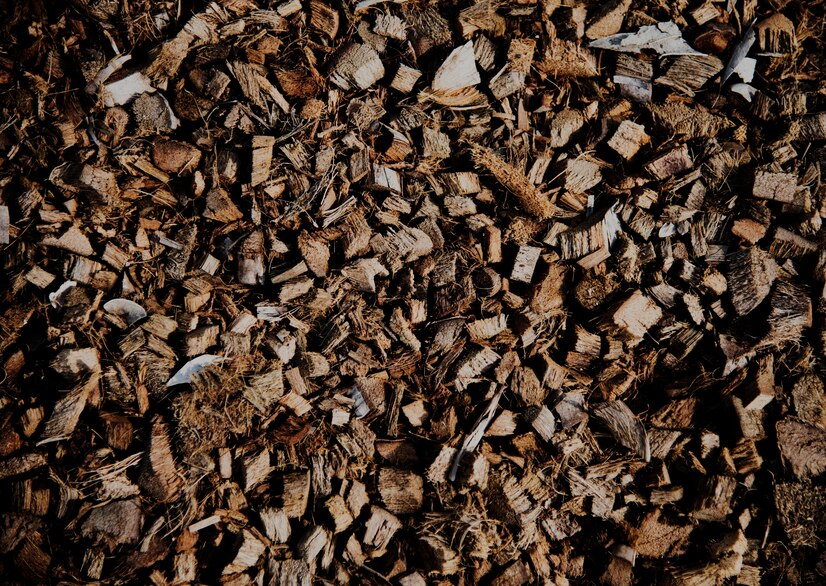Bark mulch is an invaluable resource for gardeners and homeowners in Kenmore, WA. Utilizing bark mulch brings numerous advantages that enhance the health and appearance of your yard. From improving soil moisture and fertility to offering effective weed suppression, bark mulch is the go-to solution for maintaining a vibrant and well-kept garden.
Delve deeper into the key benefits of using bark mulch, explore the best types available for Kenmore gardens, and get practical tips for its application and maintenance. Understanding these aspects will help you make the most of bark mulch to keep your yard looking lush and well-cared for year-round.
Key Benefits of Bark Mulch for Kenmore Yards
Enhancing Soil Moisture and Fertility
Bark mulch is excellent for retaining soil moisture, especially critical during dry periods. When applied correctly, bark mulch reduces water evaporation from the soil, ensuring your plants have a consistent water supply. This is particularly beneficial for gardens in Kenmore, where maintaining proper soil moisture can be a challenge.
Additionally, as bark mulch decomposes, it adds organic matter to the soil. This process improves soil structure, enhances nutrient availability, and promotes beneficial microbial activity. These factors contribute to a healthier and more fertile soil environment, leading to stronger and more resilient plants.
Weed Prevention and Soil Protection
One of the primary advantages of bark mulch is its ability to suppress weeds. By creating a thick, protective layer over the soil, bark mulch blocks sunlight from reaching weed seeds, inhibiting their growth. This means less time and effort spent on weeding and more time enjoying your beautiful garden.
Moreover, bark mulch acts as a shield against soil erosion. It cushions the impact of heavy rain and wind, preventing soil displacement and loss. This is especially important for sloped areas or places prone to erosion in your yard. The mulch layer also helps regulate soil temperature, keeping it cooler in the summer and warmer in the winter, which is beneficial for plant health.
Improving Visual Appeal
Beyond its practical benefits, bark mulch significantly enhances the visual appeal of your garden. Available in various colors and textures, it provides a polished and cohesive look to flower beds, pathways, and other garden areas. Bark mulch complements the natural beauty of plants and creates an aesthetically pleasing environment. The neat and tidy appearance of bark-mulched areas can transform your yard into a more inviting and attractive space.
Top Types of Bark Mulch for Kenmore Gardens
Overview of Common Bark Mulch Varieties
Choosing the right type of bark mulch is crucial for meeting the specific needs of your garden. Here are some common varieties:
- Cedar Bark Mulch: Cedar mulch is renowned for its pleasant scent and natural insect-repelling properties.
- Hemlock Bark Mulch: Hemlock mulch boasts a rich, dark color that adds depth and beauty to garden beds.
- Pine Bark Mulch: Pine mulch is lightweight and decomposes at a moderate rate, adding nutrients to the soil over time.
Advantages and Disadvantages of Each Type
Understanding the pros and cons of each type will help you make the best choice for your garden:
1. Cedar Bark Mulch:
- Advantages: Long-lasting, aromatic, and repels insects.
- Disadvantages: Can be more expensive compared to other mulch types.
2. Hemlock Bark Mulch:
- Advantages: Rich coloration, non-toxic to plants, and aesthetically pleasing.
- Disadvantages: May decompose more quickly than cedar, requiring more frequent replacement.
3. Pine Bark Mulch:
- Advantages: Affordable, easy to spread, and beneficial for soil health as it decomposes.
- Disadvantages: Can attract certain pests and may need to be reapplied more often than cedar or hemlock.
Application Techniques for Optimal Results
Step-by-Step Guide to Applying Bark Mulch Properly
1. Prepare the Area:
- Clear the area of any weeds, rocks, and debris.
- Loosen the soil slightly to allow for better integration of the mulch.
2. Apply Mulch:
- Spread a 2-4 inch layer of bark mulch evenly over the soil.
- Ensure a consistent thickness, avoiding thin or overly thick areas.
3. Water the Mulch:
- Lightly water the mulch to help it settle into place and integrate with the s
oil.
4. Edge the Mulch:
- Create a neat edge around the mulched area to prevent the mulch from spreading onto lawns or paths.
Tips for Different Areas of the Yard
1. Flower Beds:
- Apply a 2-3 inch layer of mulch around flowers, ensuring that it does not touch the stems directly. This will provide moisture retention and weed control while allowing the flowers to thrive.
2. Around Trees:
- Spread mulch in a doughnut shape around the base of trees, leaving a gap around the trunk to prevent rot. Aim for a 3-4 inch thick layer to protect roots and maintain soil moisture.
3. Pathways:
- For pathways, use a 3-4 inch layer of mulch to create a comfortable and visually appealing walking surface. Ensure the mulch is evenly spread and compacted gently to minimize shifting.
Maintenance Tips for Long-Lasting Bark Mulch
Regular Care and Upkeep Practices
1. Inspect Mulch Regularly:
- Check the mulch layer periodically for signs of compaction, mold, or pests.
- Fluff the mulch occasionally to aerate it and maintain its effectiveness.
2. Weed Control:
- Remove any weeds that manage to sprout through the mulch to prevent them from spreading.
- Use a rake or hand tool to eliminate weeds without disturbing the mulch layer excessively.
3. Water Maintenance:
- Ensure that the mulch is not overly dry or waterlogged. Adjust watering practices as needed to maintain optimal soil moisture.
Avoiding Common Mistakes
1. Over-Mulching:
- Avoid applying mulch too thickly, as this can suffocate plant roots and hinder growth. Stick to the recommended 2-4 inch layer.
2. Mulching Too Close to Plants:
- Do not allow mulch to pile up against plant stems or tree trunks, as this can cause rot and attract pests.
When to Replenish or Replace Mulch
1. Replenish Annually:
- Add fresh mulch annually to maintain the desired thickness and appearance.
- Remove any decomposed or compacted mulch before applying a new layer.
2. Replace Every 2-3 Years:
- Completely replace the mulch every 2-3 years to revitalize the soil and maintain a fresh look for your garden.
Conclusion
Enhancing your Kenmore yard with premium bark mulch offers numerous advantages, from improving soil health and moisture retention to enhancing visual appeal and reducing maintenance efforts. By selecting the right type of bark mulch and applying it correctly, you can create a thriving, attractive garden that remains vibrant throughout the year.
At Northwest Landscape Supply, our professionals are here to provide top-quality bark mulch and expert advice tailored to your specific needs. Invest in your garden’s long-term health and beauty by choosing premium bark mulch in Kenmore, WA. Contact us today to explore our range of landscaping solutions and take the first step toward a more stunning and sustainable yard!





